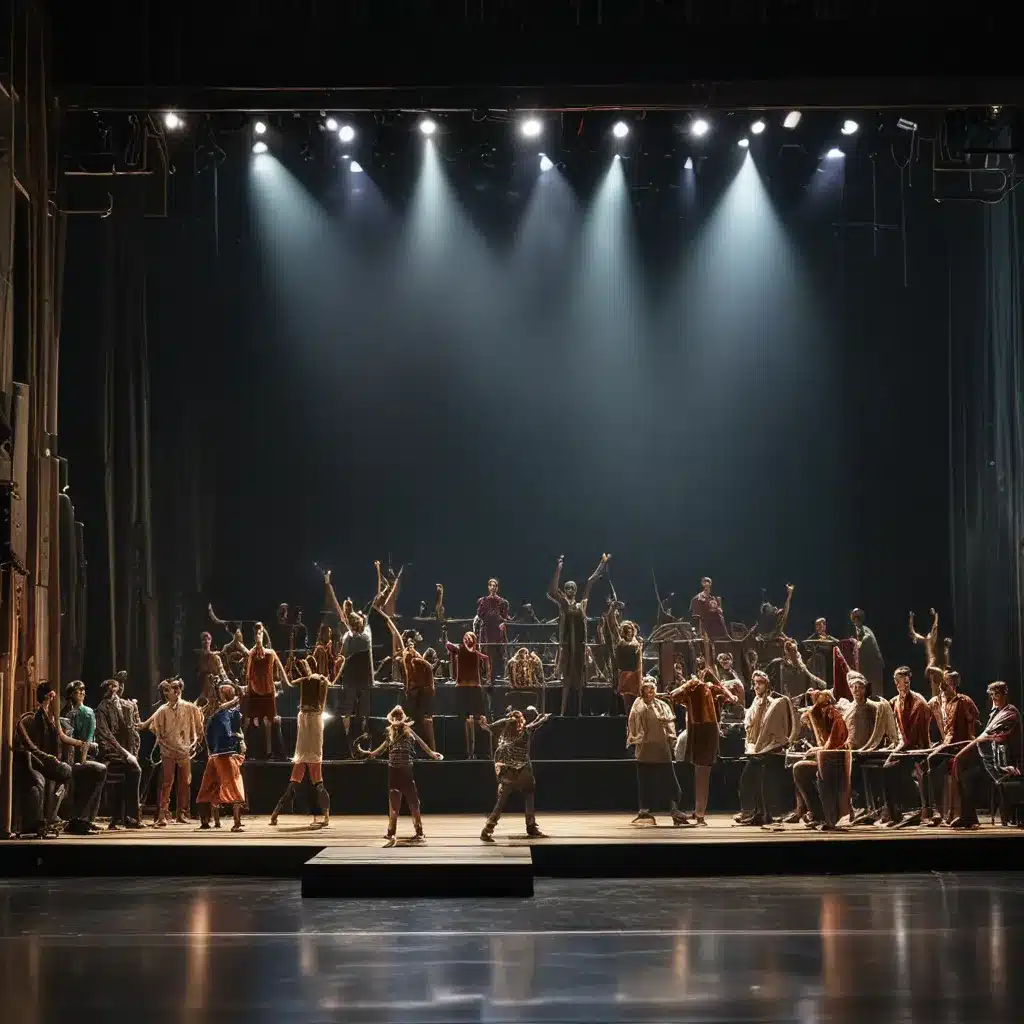
As a lifelong theater enthusiast, I’ve always been captivated by the magic that unfolds on stage. From the captivating performances to the stunning visuals, every element comes together to create an unforgettable experience. But there’s one aspect of musical theater that often goes unnoticed – the unsung heroes of sound design.
Orchestrating the Aural Landscape
In the world of musical theater, sound designers are the maestros of the auditory realm. They’re the architects who craft the aural landscape, weaving together a tapestry of melodies, sound effects, and subtle ambiance that transports the audience to another time and place. It’s a role that requires a deep understanding of acoustics, an acute sense of timing, and a keen creative vision.
Picture this: you’re sitting in the audience, eagerly awaiting the start of the show. The lights dim, and suddenly, you’re engulfed in a swell of orchestral music that sends shivers down your spine. That seamless transition from silence to a full-blown musical number is the result of meticulous planning and execution by the sound designer.
Behind the scenes, they’re the unsung heroes orchestrating the symphony of sound. They work tirelessly, fine-tuning every detail to ensure that the audience is completely immersed in the world of the production. From the haunting echoes of a lone violin to the thunderous rumble of a full ensemble, their work is the lifeblood that brings the story to life.
The Art of Balancing Sonic Elements
One of the greatest challenges faced by sound designers is the art of balancing the various sonic elements within a production. Imagine a musical where the orchestra overpowers the vocals, or a play where the sound effects drown out the dialogue. It’s a delicate dance, requiring the sound designer to meticulously adjust levels, pan speakers, and tweak equalization to create a harmonious blend.
It’s not just about ensuring that each element is audible; it’s about creating a seamless sonic tapestry that enhances the overall storytelling. The ABTT, the leading professional association for theater technicians in the UK, emphasizes the importance of this balance, stating that “the skill is in not getting in the way of the on stage dialogue, sound effects or other audible movements on stage, but filling in where vision would help with the plot.”
It’s a delicate juggling act, with the sound designer constantly adjusting the levels to ensure that the audience is captivated by the performance, not distracted by the technical elements. And when they get it right, the result is a seamless, immersive experience that transports the audience to the heart of the story.
Embracing the Power of Technology
In today’s digital age, the role of the sound designer has become increasingly complex, with the integration of cutting-edge technology playing a crucial role in their work. From advanced audio mixing consoles to sophisticated sound libraries and digital effects, the tools at their disposal have evolved exponentially.
Gone are the days of relying solely on analog equipment and physical sound effects. Today’s sound designers have a veritable arsenal of digital resources at their fingertips, allowing them to create sonic landscapes that were once the stuff of dreams. With the push of a button, they can conjure up the rumble of a passing train, the haunting howl of a wolf, or the ethereal soundscape of a futuristic world.
But technology is not just a means to an end; it’s a creative medium in its own right. The most innovative sound designers are constantly pushing the boundaries, experimenting with new techniques and embracing the ever-evolving possibilities of digital audio. They’re the alchemists of the soundscape, blending analog and digital elements to create something truly unique and captivating.
A Collaborative Effort
One of the most fascinating aspects of sound design in musical theater is the collaborative nature of the process. Sound designers don’t work in isolation; they’re part of a larger creative team, each member contributing their own expertise and vision to the final product.
From the director’s creative vision to the composer’s musical score, the sound designer must carefully navigate the intricate web of artistic input to craft a cohesive aural experience. It’s a delicate balancing act, requiring a keen understanding of the director’s intentions, the composer’s musical language, and the actors’ needs.
The Musical Theater Center, where I’m a frequent visitor, is a shining example of this collaborative approach. Here, students not only hone their performance skills but also learn the art of sound design, working hand-in-hand with directors, choreographers, and technical crews to bring their creative visions to life.
It’s a testament to the power of teamwork, where the sound designer’s role is not merely to execute a task, but to actively contribute to the storytelling process. They’re the unsung heroes who elevate the entire production, seamlessly blending their expertise with the creative vision of the broader ensemble.
Striking the Perfect Balance
In the end, the true mark of a successful sound designer is their ability to strike the perfect balance between function and artistry. They’re not just technicians; they’re storytellers, using sound as their canvas to transport the audience to new worlds, to evoke emotions, and to heighten the overall theatrical experience.
Whether it’s the haunting melody that lingers in the audience’s mind long after the curtain falls or the sudden burst of sound that elicits a startled gasp, the sound designer’s work is the invisible thread that weaves the entire production together. They’re the unsung heroes, the maestros of the auditory realm, whose contributions are as vital to the success of a musical as the performances themselves.
So the next time you find yourself captivated by the magic of a live musical performance, take a moment to appreciate the unsung heroes behind the scenes – the sound designers who orchestrate the aural landscape, elevating the entire experience to new heights. Their work may be hidden from view, but its impact is undeniable, forever shaping the way we experience the art of musical theater.

